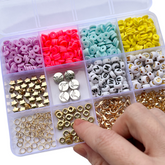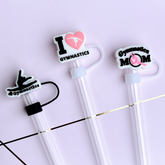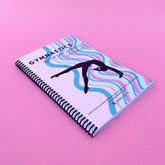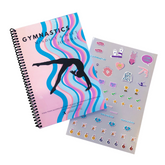How to Set Up a Home Gymnastics Space on a Budget
If your child loves gymnastics but you don’t have the budget or space for a full gym, don’t worry—you can still create a functional and fun home gymnastics space without breaking the bank! Whether your gymnast is just starting out or already mastering advanced skills, having a dedicated training area at home can be a game-changer for their development. Here’s how you can set up a home gymnastics space on a budget & make sure to check out our comprehensive Home Gymnastics Equipment Guide!
1. Choose the Right Location
The first step in creating your home gymnastics space is selecting a good location. You don’t need a huge room or a full-sized gym. Look for an area that has enough open space where your gymnast can move freely. Some ideas include:
- Living room: If you have a spacious living area, it can double as your gymnastics space. Just make sure to clear out any furniture that might get in the way.
- Basement or garage: These are often great spaces for larger setups, especially if you don’t mind a little noise or occasional mess.
- Spare bedroom or hallway: Even a smaller room or hallway can work if you’re strategic about the equipment you choose.
2. Invest in Multi-Use Equipment
When it comes to equipment, you don’t need to buy everything at once. Instead, focus on a few pieces that can grow with your gymnast as their skills improve. Here are a few must-haves that won’t break the bank:
- Gymnastics Mat: A good quality, foldable mat is one of the most important pieces of equipment you can buy. It provides cushioning for floor exercises and can be used for tumbling, stretches, and even balance training. Look for mats that are easy to store and fold up when not in use.
- Balance Beam: A low, sectional balance beam is a great way to practice balance skills at home. Many affordable options are available that can be used on the floor or raised slightly off the ground, and this one even folds!
- Tumbl Trak or Mini Trampoline: A small, indoor trampoline or tumbling mat helps improve jumping, bouncing, and aerial skills. It’s a fun way to build strength and flexibility without taking up too much space.
- Resistance Bands: Resistance bands are a super cost-effective way to add variety to strength and flexibility training. They can be used for stretches, drills, and even conditioning exercises.
Many of these items can be found for under $100, and they’ll provide hours of useful training at home.
3. DIY Solutions for Extra Savings
If you’re looking to save even more, consider some DIY solutions for equipment. With a little creativity, you can make your own gymnastics accessories at home. Here are a few ideas:
- Homemade Balance Beam: If you have some basic carpentry skills, you can make a simple balance beam with PVC pipes or wood. There are plenty of tutorials online for making your own low balance beam at home.
- Chalkboard Wall: For a creative and inexpensive training tool, create a chalkboard wall for your gymnast to practice routines, jot down goals, or track progress. This is a fun and motivational addition to their gymnastics space.
- Foam Padding: Use foam or old yoga mats to create extra padding in areas where your gymnast will be practicing floor routines or handstands. You can cut up old foam pads to create soft barriers or a custom landing area.
4. Incorporate Conditioning and Flexibility Tools
Conditioning and flexibility are key parts of gymnastics, and luckily, they don’t require a lot of expensive equipment. Here are a few budget-friendly tools you can incorporate into your setup:
- Yoga Mat: A simple yoga mat is an essential tool for stretching and flexibility work. It’s also helpful for floor exercises like splits, straddles, and backbends.
- Foam Roller: A foam roller is great for muscle recovery and can help your gymnast improve flexibility and reduce soreness. Plus, they’re relatively inexpensive and take up little space.
- Stretching Strap: A stretching strap is a simple tool that helps your gymnast improve flexibility by holding stretches for longer periods. They’re easy to store and can be used for a variety of stretches.
5. Safety First
While you’re building out your home gymnastics space on a budget, safety should always be a priority. Here are a few simple safety tips:
- Clear the area: Make sure the floor is clear of furniture, rugs, and anything else that could cause your gymnast to trip or get injured. Try to use soft mats wherever possible to cushion falls.
- Proper supervision: Always supervise your gymnast during their training, especially if they’re practicing more advanced skills. Make sure they are using equipment safely and appropriately.
- Check the stability of equipment: If you’re using any DIY equipment or making adjustments to existing items, ensure that everything is stable and secure before your gymnast starts practicing.
6. Get Creative with Storage
Once you’ve set up your gymnastics space, you’ll need a plan for storing all your equipment when it’s not in use. Here are some affordable and creative storage solutions:
- Storage bins: Use clear plastic storage bins or stackable bins to keep small equipment like bands, cones, and resistance tools organized and easy to access.
- Wall hooks or shelves: Install a few hooks or shelves on the wall to store things like mats or gymnastic grips when they’re not in use. This will keep the space tidy without taking up too much room.
- Under-bed storage: If you’re working with limited space, consider storing mats or smaller items under a bed or in a closet.
7. Create a Motivational Environment
A home gymnastics space isn’t just about the equipment—it’s also about creating an environment that encourages motivation and focus. Here are some simple ways to inspire your gymnast:
- Goal board: Set up a space where your gymnast can write down their goals and track their progress. This could be a chalkboard, corkboard, or poster that serves as a visual reminder of their accomplishments and future aspirations.
- Inspirational posters: Hang up posters of famous gymnasts or quotes that inspire your child. These can serve as reminders to work hard and stay positive.
- Music: Create a playlist of their favorite songs for practice. Music can help make training more enjoyable and give your gymnast the energy they need to push through tough workouts.
Building a home gymnastics space on a budget is all about getting creative and making the most out of what you have. Start with the essentials—mats, balance beams, and flexibility tools—and gradually add more equipment as your gymnast’s skills progress. With a little effort and resourcefulness, you can create a fun and effective training space at home without spending a fortune.
Are you ready to set up your own home gymnastics space? Start small, get creative, and most importantly—have fun with it! Happy training!








